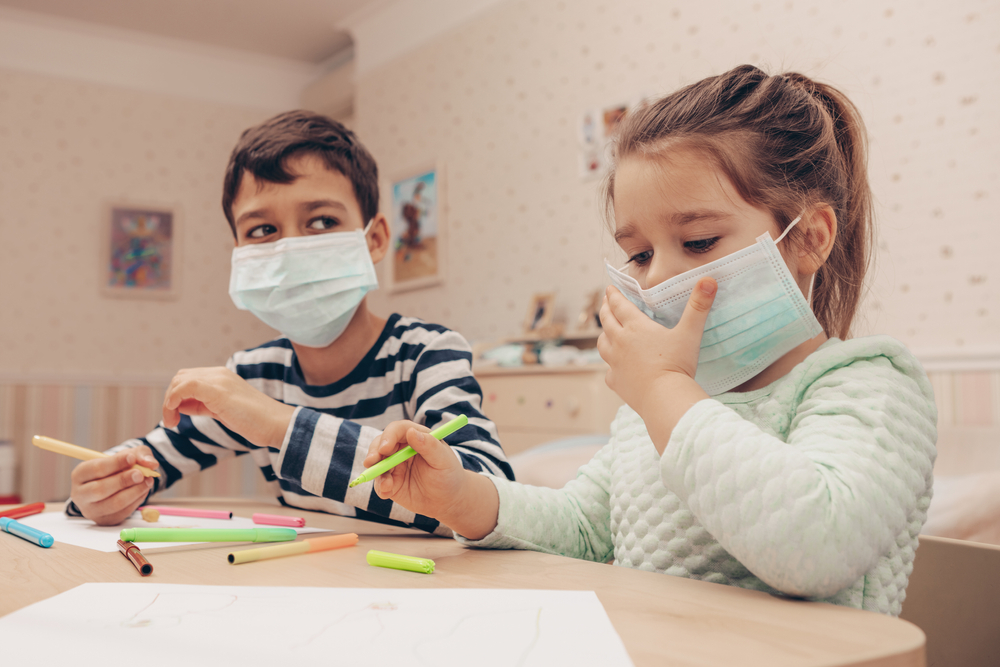Fostering security and joy in the new school year for elementary students and their families
We said it last fall, and we have to say it again: this year, everything is different.
Many children are in-person this school year with teachers and classmates for the first time in 18 months. But the time off was no vacation! Our lives have been filled with worry, change, and discomfort. Some of us have lost loved ones or been temporarily isolated from family and support systems. Some of us have been ill. Some of us have lost income and worried about food and basic necessities.
All of us have faced unprecedented uncertainty.
But now we are back together! Joyful faces, even partially hidden behind masks, line up at school each morning. Teachers get to see their students in between teaching lessons to share and connect. Students get to collaborate in the classroom and run together on the playground. We feel every emotion: Worry, stress, overwhelm, gratitude, relief, joy.
How do we help our children return to school where there is no such thing as ‘back to normal’? This year will be hard — it also may be fun and rewarding. We can help our children by making room for their emotions, their experiences, and their behaviors. Below are some simple ideas of how we might do this. Pick out a couple and see what works for your family.
1. Making Room for emotions: Fill the tank.
At school it’s important that kids are careful about what they touch and how close they are to each other. At home with you, they will need extra time to connect. Fill your child’s tank >> for the day with a few minutes of distraction-free time together each morning. For older children, ask questions about their plans for the day. Practice a few deep breaths together. Ask them if any emotions are rising up in their mind or dreams. Model this by sharing your own, then reassure them that worry and excitement are both understandable and acceptable.
2. Making room for experiences: “I don’t like school!”
Play school together. Pretend to be the student and let your child teach you a math lesson, walk you through the hallways, or direct you at mealtime. What experiences arise? If your child is older, you can simply ask them about their day. Remember that it’s perfectly normal for your child to feel overwhelmed at school or to dislike the full day’s schedule and challenges. No need to convince them otherwise. You can reflect their feelings without trying to problem-solve. If you have concerns, follow up at a different time with simple questions, or email their teacher.
3. Making room for experiences: Empathy
Is your child having conflict with another child at school? Remind them that we don’t know what this child might be feeling on the inside or what they have experienced during these last 18 months. If your child is younger and has a hard time internalizing such an abstract idea, reading helps! Here’s a list of books to promote empathy for other experiences. https://www.commonsensemedia.org/lists/books-that-teach-empathy
4. Making room for behavior: Evening routines
Have your child pack their lunch or backpack in the evening with your help as needed. If they’re not quite up to the task, make small goals together. For example, if you always place your child’s lunch in their bag, suggest that next week it’s their special job to remember to grab the lunch from the counter and zip it safely inside their backpack. Small steps will help them ease into the many tasks and responsibilities of the year. Create a checklist with your child with words or pictures to help them remember.
5. Making room for behavior: silliness, disinterest, and push-back
Have you heard from your child’s teacher that they are extra silly, disinterested, or push back against every little thing this year? Do you experience this at home? These behaviors may feel so frustrating and disappointing to parents and teachers. After so much time in improvisation, it might seem like children should be engaged and grateful to be back in a routine with their peers. How jarring to see the exact opposite of gratitude and contentment.
Deep breath! Remember that the loss of stability or sudden changes have deeply impacted our children, too. What might look like defiance or goofing off may be a child’s brain processing trauma. It does not mean that they do not respect you or their teachers, and it does not mean that they aren’t learning. Give it time, and stay connected by engaging in child-focused playtime >> or simple free play and expression. Give them lots of second chances! And give yourself lots of second chances, too! As their trust builds, they will become more open and confident at school.
Expect the first several months to be a little bit bumpy.
Everyone from the most seasoned teacher to our youngest learners have never been in quite this position before. Some of us are giddy with relief; some of us are burdened by worry. This is normal and okay. Practice breathing together. Remind yourself and your child that trying is an amazing accomplishment. Reach out to your child’s teacher with questions and concerns. They likely need encouragement, too!
And don’t forget to keep connecting with your child: walks, coloring, reading aloud together are all still wonderful ways to build trust that you’re here for them amidst change.
If you are in need of school supplies, food, or mental health support, please contact your school district’s family center. The Family Help Line can help you locate the correct contact information and help you access what your family needs: call or email us at 1-800-932-4673 or familyhelpline@parenttrust.org

